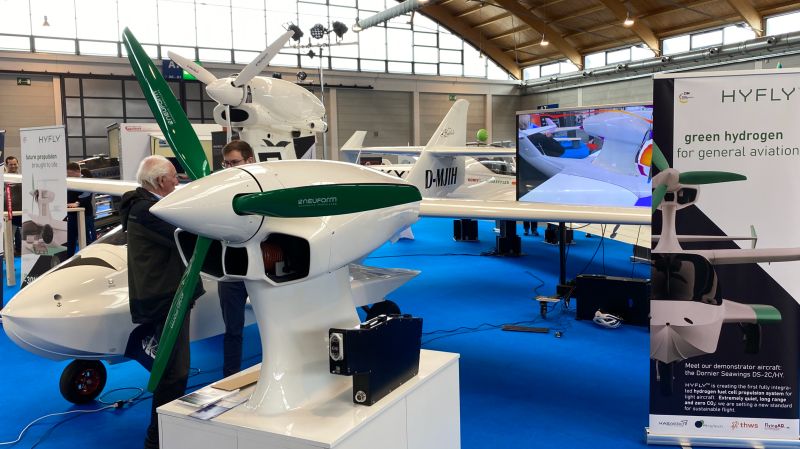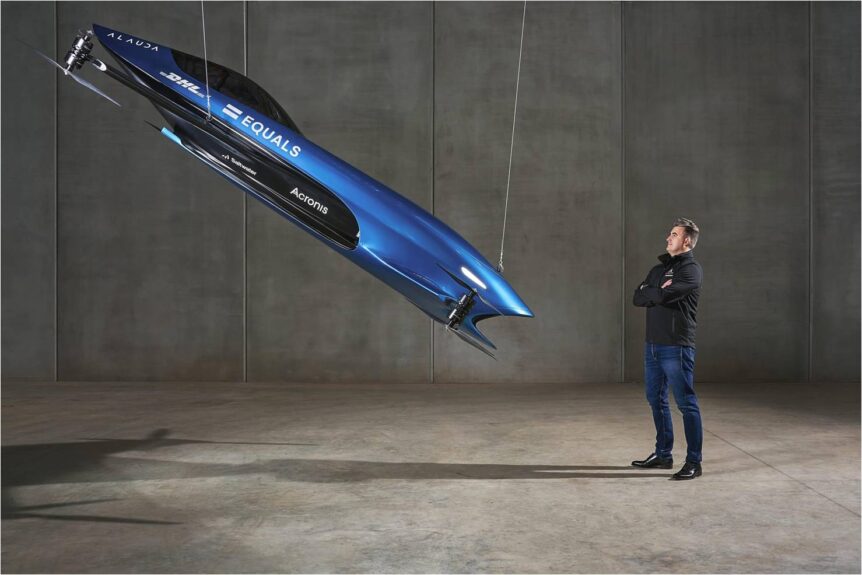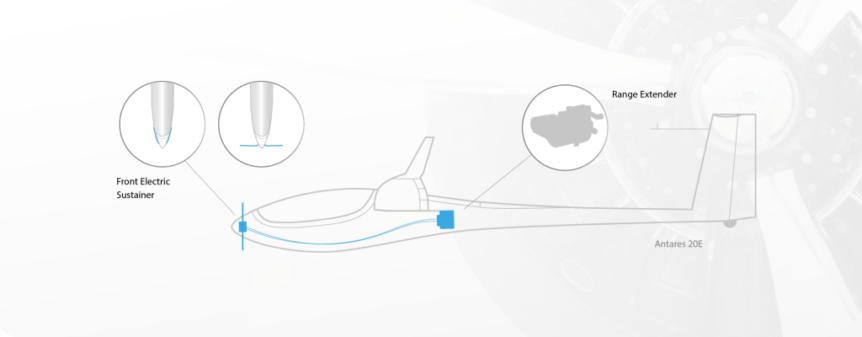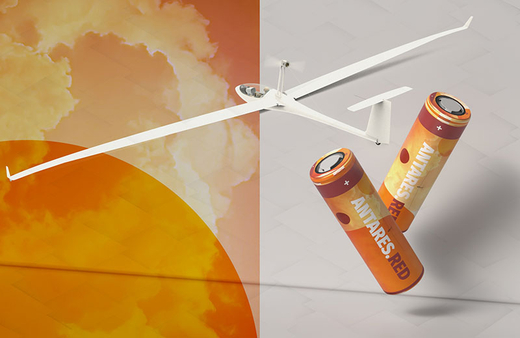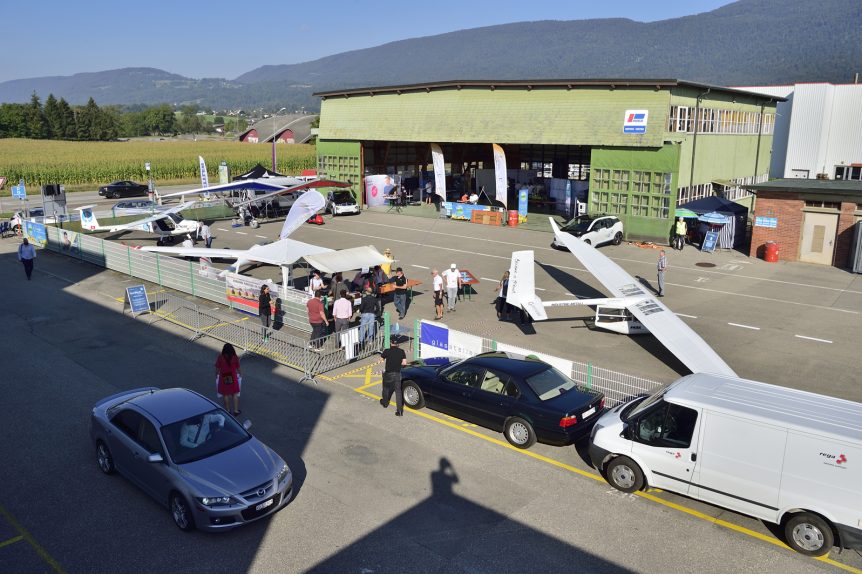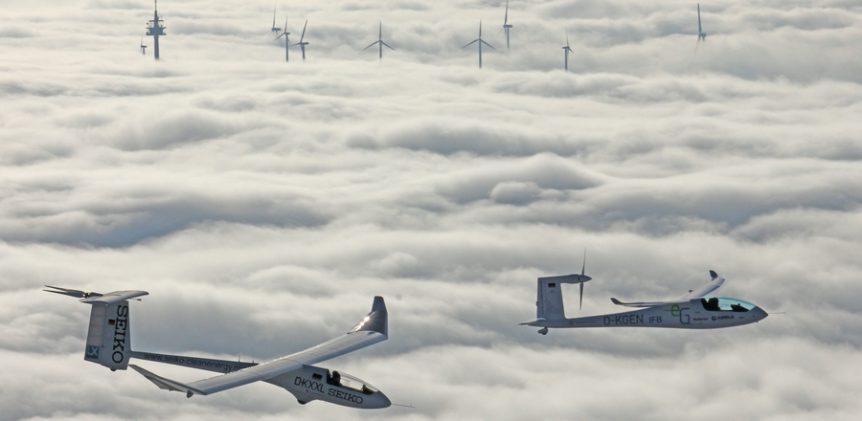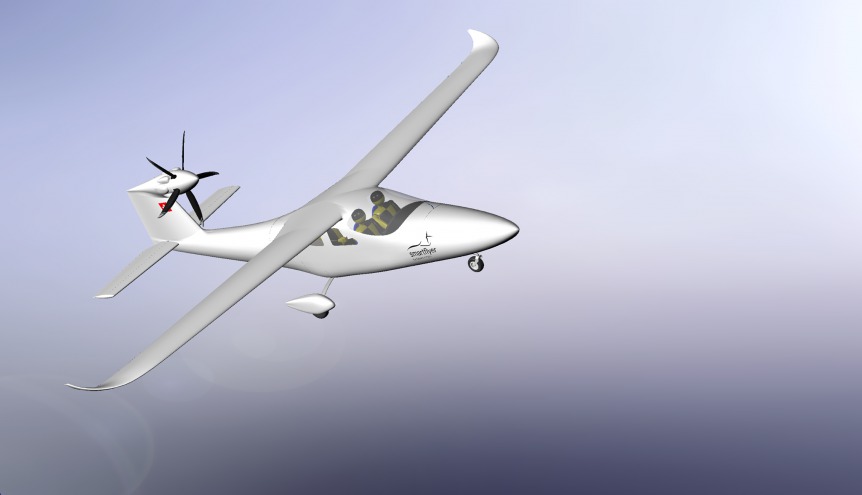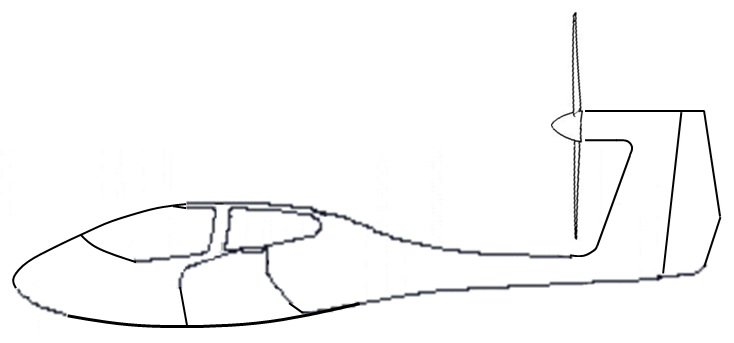What happens when a major aircraft company buys an interesting seaplane and repowers it with hydrogen? Dornier, a long-time German producer of often brilliant aircraft, acquired the rights to a two-seat amphibian, the Flywhale FW650, as of January 1, 2022. Originally powered with a Rotax engine, the craft will be repowered with an electric motor and a variety of possible battery, hydrogen, or hybrid power sources. Redesignated the Dornier DS-C2, it becomes part of the Seawings division and could live not only in the world of unlimited runways, but become a true eVTOL (electric Vertical Take Off and Landing) airplane, the DS-2C-X. The standard Light Sport Aircraft configuration can carry two at 250 kilometers per hour (155 mph), over a distance of 1,000 kilometers (620 miles) – impressive enough. It can operate in sea states up to 2 (Sea state 2 includes waves of 0.6 to 0.9 feet and winds up to 8 to 10 knots, or 9.2 to 11.5 mph.) …
Electric Air Racing News
Electric Air Racing is a modern take on an age-old idea. Ever since people tamed horses, the idea of comparing their speeds became important. Boats, cars, and aircraft followed the same path. As with horses, the idea that “racing improves the breed” held sway. Now, one Australian company and a major aeronautical organization hope to make air racing a path to the future. Alauda Aeronautics Matt Pearson founded the Airspeeder racing program with the credo, “Competition accelerates progress.” Toward that end, he partnered with Alauda, an Australian firm, to develop a group of high-performance aerial racers. Looking somewhat like the vehicles flown by Luke Skywalker in the Star Wars films, the “flying cars” certainly evoke a performance image. The team recently flew three Airspeeders via remote control with First Person View (FPV) technology helping ground-based pilots control their craft around a Alauda unabashedly uses the term “flying cars,” as in, “Racing to deliver a revolution in personal air mobility so …
Antares, FES, and AdvanTec Create E-ROP Hybrid
E-ROP is a multi-party program using an Antares self-launching sailplane. FES and Adventec have crafted a hybrid version of the Antares 20e with a front electric sustainer (FES) motor in place of its tall mast-mounted motor. An incremental program, E-ROP begins by replacing the retractable unit with an FES motor on the nose. This reduces the drag created by the motor being raised into position and simplifies operation. The FES Antares flew for the first time on April 19 with Klaus Ohlmann at the helm. Ulrich Bronet recorded this short video. Under development since 2016, E-ROP will benefit from an advanced battery package from research partner AdvanTec GmbH. According to the project, “The concept provides for batteries in the fuselage and wings, which have an energy capacity of 22 [kilowatt-hours] at a total take-off weight of 650 [kilograms] (1,433 pounds) MTOM (Maximum Take Off Mass).” 22 kWh is about one-fifth of a Tesla battery package and will allow up to 450 …
Antares Upgrades to RED.3 Batteries
An airplane that’s a seasoned veteran gets even better with the new SAFT RED.3 batteries. At the Grenchen, Switzerland Electrifly-in Lange Antares spread their wings over 21 meters of display space each. Klaus Ohlmann flew the latest E model from the manufacturer and a hybrid e-Rop from AdvanTec GmbH was on static display. These airplanes are evolutions of the original design, which goes back to 2003. SAFT’s new batteries will make the plane even better. Richard Van Grunsven, founder of Van’s Aircraft, granted your editor an interview in 2010 and demonstrated the motor’s operation on his Antares. The same 42 kilowatt (56.3 horsepower) motor is retained in the current version, but batteries have become better in the last 11 years. http://cafe.foundation/blog/richard-van-grunsvens-antares-20e/ As your editor reported then “Two carbon-fiber propeller blades attach to beautifully machined fittings on the rotating cylinder, and provide enough thrust to give the 460 kilogram (1,014 pound) ship a 4.4 meter per second (866 feet per …
Electrifly-in: Grenchen 2021
Electrifly-in, formerly the Smartflyer Challenge, is on for September 11 and 12, 2021, in Grenchen, Switzerland. The event, even held in 2020 despite the pandemic, is a compact showing of the latest in electrical aircraft and technology. Watch as this 2019 video as a Φnix (the Greek letter phi + nix –a clever bilingual pun) takes off, circuits the area and makes a landing – all the time flying with other electric aircraft. In this flight, you can see the compact airport (including a grass landing strip) and a lovely setting for a great event. Started as the Smartflyer Challenge* in 2016, the gathering has changed its name to be more inclusive. Last year, even with travel limitations imposed worldwide, saw a healthy turnout of all-electric flyers, ranging from ultralight electric “trikes” to cross-country tourers. From 12 to 50 Kilowatts and Beyond Powering a large number of machines on last year’s flight line, Eck-Geiger Engineering makes a range of motors …
e-Genius Gets Around Quickly, Inspires Others
Birds of the Same Tail Feather Configuration Prof. Dipl.-Ing. Rudolf Voit-Nitschmann (emeritus) had a lot to do with designing the 1996 Icare II solar-powered sailplane and the 2011 e-Genius. Icare II set several world records in its 20 years, most under the guidance of pilot Klaus Ohlmann. e-Genius won the award for being the quietest airplane at the Green Flight Challenge held in Santa Rosa, California, and was a close second to Pipistrel’s G4 in passenger miles per gallon (equivalent) energy use. Dipl.-Ing. Voit-Nitschmann was kind enough to explain to your editor how the propeller center came to be at the top of the tail on e-Genius. It’s a similar configuration to that on the Icare II*, and one he had found to provide the greatest undisturbed air to the propeller and the least added friction drag, since only the lower part of the blade crossed in front of the upper part of the vertical fin and rudder. This configuration …
SmartFlyer Challenge: Electric Airplanes Fill Swiss Skies
There are few times one will see more than one electric airplane at the same place – outside of perhaps, Friedrichshafen’s e-Flight Expo every year. But to see them flying at the same field on the same day is an even grander delight. That happened September 9 and 10 at Grenchen, Switzerland. Grenchen hosted the world’s first all-electric fly-in – the SmartFlyer Challenge. It drew an appreciable number of electric aircraft of all sizes and types despite the clouds and rain that kept some from scaling the mountains. An Electric Three-Plane Formation Flight The Siemens-powered Magnus e-Fusion from the Czech Republic, the electric Phoenix motorglider, and Stuttgart University’s e-Genius all flew formation with a Piper L-4, a World War Two liaison aircraft and camera plane. They joined a commendable group of aircraft on the field. All seemed to fly as much as possible during the event, including drag racing a Tesla S sedan down the runway. Expatica.com noted, “Pilot Frank …
EC04 Design Wins 2016 Berblinger Prize
A Big Win for Stuttgart Team Dipl-Ing Ingmar Geiß, Deputy Project Leader for e-Genius at the Institute of Aircraft Design at the University of Stuttgart, shared this pleasant news: “I am happy to tell you that our hybrid-electric “ECO4” has won the Berblinger Prize 2016. ECO4 combines an optimized electric airframe with a modern combustion engine generating electricity. This combination leads to an aircraft which cruises at 120 knots and consumes 40 percent less fuel than comparable state-of-the-art airplanes with conventional propulsion. As a further advantage, a small but powerful battery system enables a silent take-off without the combustion engine running, reducing significantly the noise emissions.” The Berblinger Prize Gunter Czisch, mayor of Ulm, presented the 23,000 euro ($24,035 US) prize to the team, which intends to invest the amount “directly into the further development of the airplane.” The prize was founded in recognition of Albrecht Ludwig Berblinger, “the little tailor of Ulm, who tried to cross the river …
e-Genius Crosses the Alps on Battery Power – Twice!
It makes your editor’s morning to receive such wonderful emails. Dipl. Ing. Ingmar Geiß, Deputy Project Manager for Overall Aircraft Systems on e-Genius wrote the following: “We had a great Saturday – we flew from Stuttgart over the Alps to Italy, recharged the batteries and flew back on the same day! For us, this shows the practicability of battery powered aircraft and we think this is a milestone towards an eco-friendly and efficient aviation.” The e-Genius web page on the University of Stuttgart site expands on the story, describing the flight’s accomplishment. “A milestone towards an energy efficient and carbon-neutral aviation has been reached.” While Americans rested up for their Fourth of July festivities, “Saturday morning, the electric aircraft “e-Genius” flew from the airfield Hahnweide near Stuttgart over the Alps to Italy. On its way to the north-Italian airfield Calcinate del Pesce, the hi-tech aircraft had to cover a distance of 320 kilometers (198.4 miles) and climbed to an altitude …
e-Genius, Klaus Ohlmann Set Records, Records, Records!
“Records, Records, Records!” heads the news on the Institut for Flugzeugbau (IFB) web site this morning. The sub-head reads, “Experienced hands plus a high-performance airplane plus one week equals seven world records.” Admitting to fuzzy math, the writer still draws a clear line to the seven records. Klaus and e-Genius spent the third week of July in Seeres – La Bâtie, France where they achieved seven FAI (Fédération Aéronautique International) World Records in the Category of Electric Airplanes. According to the IFB, “In two flights (July 18th and 19th) he attained: – Speed on a 100 km round trip : 178.1 kilometers per hour (96 knots, or 110.4 mph) – Speed on a 500 km round trip : 93.03 km/h (50 kt – 57.5 mph) – Distance of 504 km (312 miles) – Absolute altitude of 6,376 m MSL (20,918 feet) – Time to climb to 6,000 m (20,000ft) : 1:53 min (an average of about 177 feet per minute) …
- Page 1 of 2
- 1
- 2

